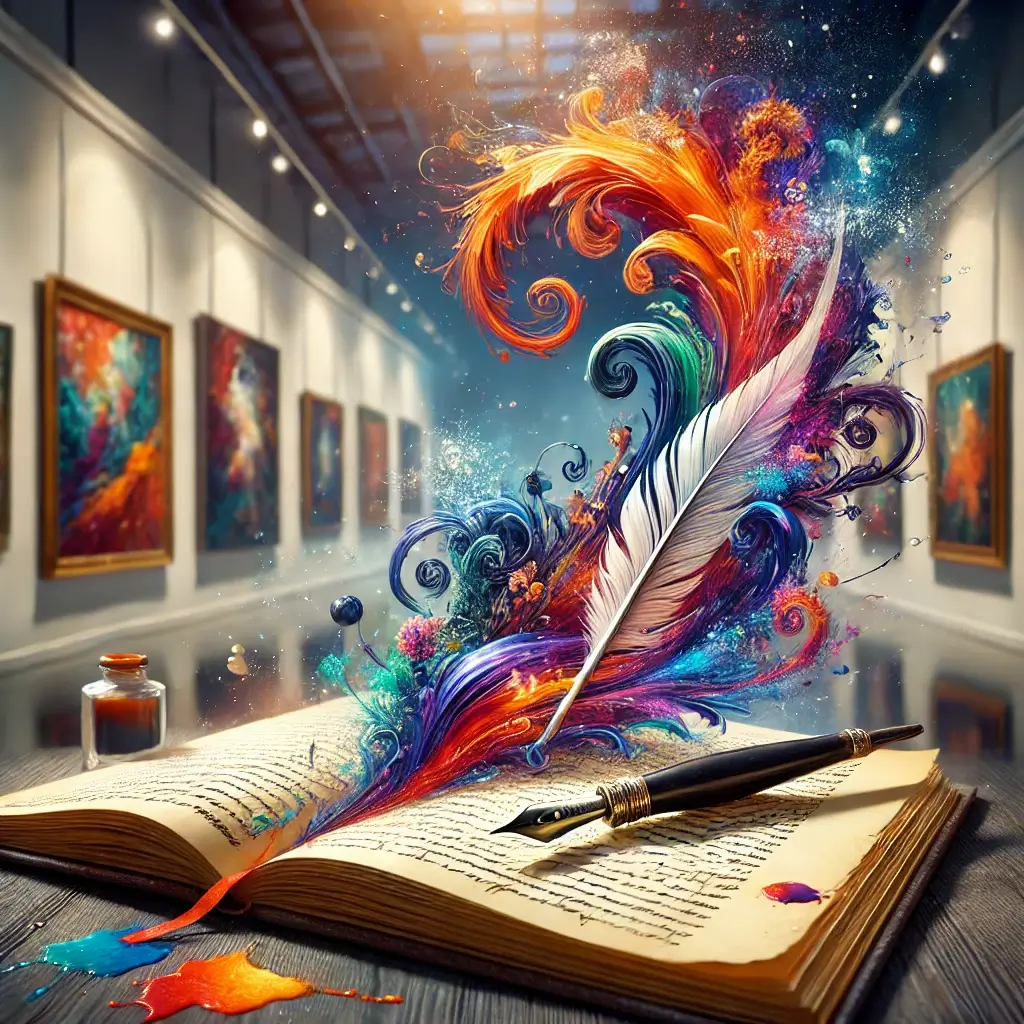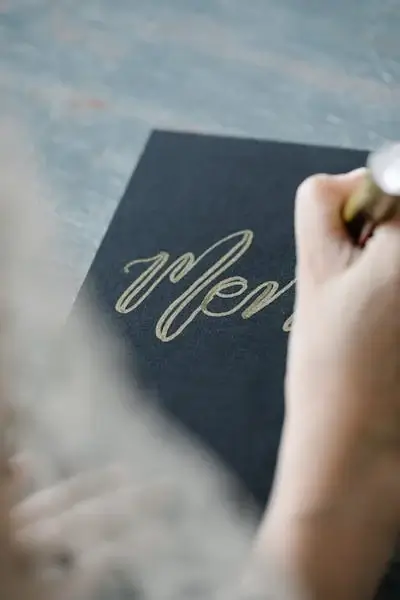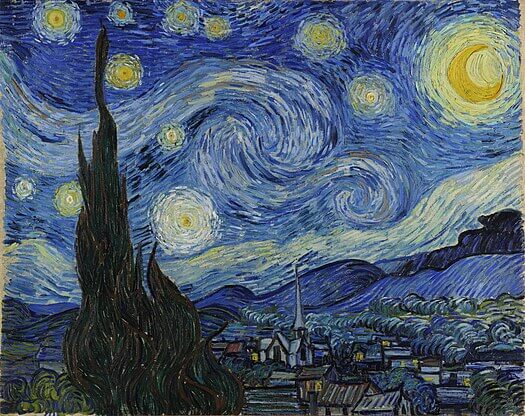Ekphrastic Expression: Creative Writing in Fine Arts: This blog post is written by the Artist Laiba Imran
- Art speaks a thousand words;
“But what if words could bring art to life?”
- In this article, we explore the vibrant world of creative writing in fine arts, where;
“The power of “ekphrastic” expression transforms visual masterpieces into literary wonders.”
Creative Writing
- Creative writing is an art form that transcends traditional boundaries.
- Through imaginative storytelling, allowing individuals to convey:
- Thoughts
- Emotions, and
- Narratives
- It encompasses various formats, including:
- Poetry
- Novels
- Playwriting and screenwriting
- Personal essays
- Song lyrics
- Short stories
- At its core, creative writing thrives on imagination.
- Moreover, it can captivate an audience by appealing to their:
- Senses
- Emotions
Ekphrastic: Creative Writing in Fine Arts

- Creative writing in fine arts represents a unique convergence of:
- Visual Expression, and
- Literary Expression
- Among its most captivating forms is;
“Ekphrastic writing, a literary response to visual art.”
- By indulging in artworks, ekphrastic writing bridges the worlds of art and literature.
- Offering a new dimension to interpreting creativity.
- For example;
- Vincent van Gogh’s Starry Night has inspired countless poems and stories.
- Showcasing the transformative dialogue between words and visuals.
Types of Writing in Fine Arts
Ekphrastic Writing
- Describes or responds to a piece of art.
- Builds a bridge between art and literature by interpreting visual creativity.
Artist Statements
- Explain the artist’s vision, process, and purpose behind their work.
Art-Themed Fiction
- Stories where art or artists play a central role, blending literary and artistic themes.
Art Reviews and Critiques
- Creative interpretations and reviews of artworks, often provide fresh perspectives.
Historical and Biographical Writing
- Explore the lives of artists.
- Also, as the cultural contexts of their creations.
Scripts and Performances
- Combine writing with multimedia art forms to produce immersive experiences.
Tips for Creative Writing in Fine Arts

Observe Closely
- Study the finer details of an artwork to inspire:
- Metaphors,
- Narratives, and
- Reflections.
Experiment with Form
- Blend prose and poetry into hybrid forms like prose poems.
Collaborate with Artists
- Engage with visual artists to understand their:
- Perspectives
- Enrich your writing
Use Multisensory Descriptions
- Evoke emotions by appealing to:
- Sight
- Sound, and
- Touch
Creative writing in fine arts offers us:
- A new lens to perceive and celebrate art.
- Extending its boundaries beyond:
- Canvas
- Sculpture, and
- Installations
Conclusion
Creative writing bridges the worlds of literature and fine arts. offering imaginative pathways to understand and appreciate art. From ekphrastic poetry to art-themed fiction, it opens up limitless dimensions of creativity.
Let your words bring artworks to life and start your journey into ekphrastic expression today!
- Ready to unlock your creative potential?
- Dive into the world of ekphrastic expression
- Transform your writing into breathtaking works of art.
- In the below comments box share your:
- ThoughtsExperiences, or
- Favorite ekphrastic pieces!
FAQs about Ekphrastic

What is ekphrastic writing?
- It is a literary form that describes the visual art.
- Creating a dialogue between the two mediums.
How can we start writing ekphrastic poetry?
- Begin by observing a piece of art closely.
- Reflect on it:
- ColorsEmotions, and
- Themes
- Then translate those impressions into words.
Why is creative writing important in fine arts?
- Creative writing enhances our understanding of art by providing new:
- Perspectives
- Interpretations, and
- Emotional connections
What are some examples of ekphrastic works?
- Examples include:
- John Keats’ poem Ode on a Grecian Urn
- Contemporary poetry is inspired by modern art.
How creative writing skills can be improved?
- Practice observing art.
- Experiment with different writing forms.
- Collaborate with artists to deepen your:
- Understanding
- Perspective
Find Here more articles related to Fine Arts
https://en.wikipedia.org/wiki/The_Starry_Night
https://www.wikiart.org/en/vincent-van-gogh/the-starry-night-1889








